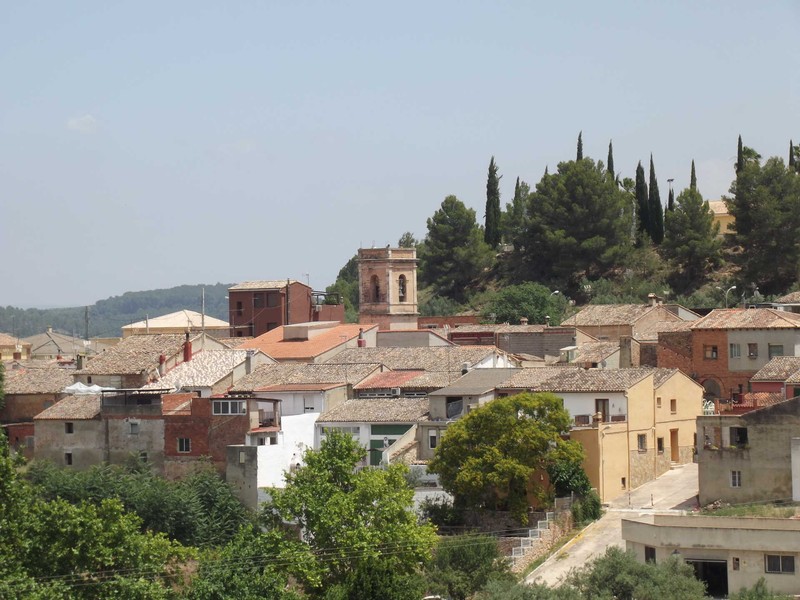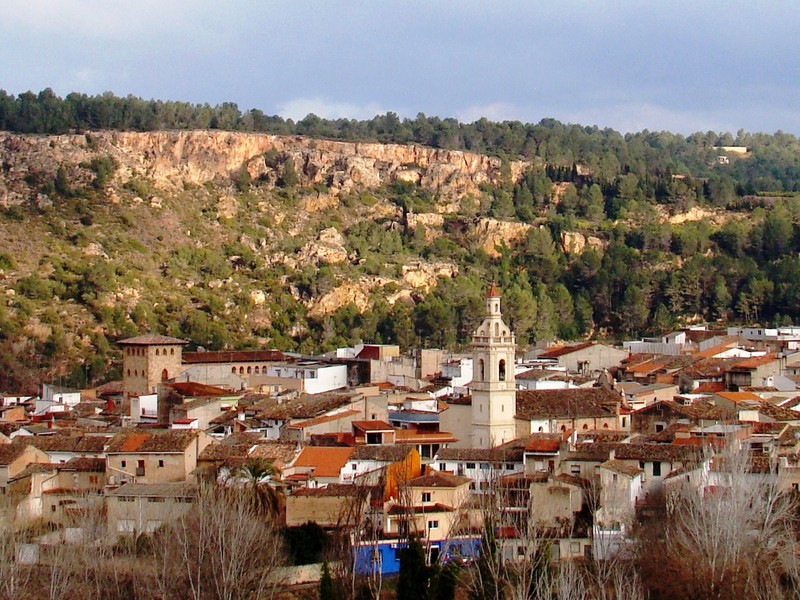Pico Caroche (Bicorp)
The Caroche or Caroig peak is a mountain of 1,126 meters, located in Teresa de Cofrentes, Spain. It is situated
Among the many archaeological sites in the municipality of Navarrés, the El Garrofero Rock Shelter stands out thanks to its remarkable interest. It is located under a limestone cornice, which protects a rock shelter with a 23-metre long wall partly decorated with cave paintings and overlooking the right-hand side of the Río Grande. The paintings date to the Neolithic period, specifically to 4,500 BCE, when hunter-gathers living in this mountainous area expressed their beliefs through stylised images and schematic themes. They were discovered and studied in 1972 by Salvador Gómez, Manuel Flores and José Aparicio, archaeologists from the Research Service belonging to Valencia Provincial Council. These paintings, along with the rest of the Levantine Cave Art of the Mediterranean Arc on the Iberian Peninsula, were given World Heritage status by UNESCO in 1998. Thirty figures divided over five areas are preserved, they were subject to an intervention to study and protect them in 2015. They notably include female anthropomorphic figures, archers and depictions of wild goats and deer: which were hunted by the archers. Close to here there are other sites with similar pictorial works such as the Voro Rock Shelter in Quesa.
The Caroche or Caroig peak is a mountain of 1,126 meters, located in Teresa de Cofrentes, Spain. It is situated
You will love La Canal de Navarrés! It’s an ideal destination for the whole family, to discover with friends, and

Estubeny, located in the interior of the province of Valencia, is an inland destination that hides a unique natural space,

Anna is a beautiful municipality in the Canal de Navarrés, well known for its Anna Lake, a lagoon surrounded by
Copyright © 2023. La Canal de Navarrés. All rights reserved.
Do not hesitate to contact us for any further information.
This website uses cookies so that we can provide you with the best user experience possible. Cookie information is stored in your browser and performs functions such as recognising you when you return to our website and helping our team to understand which sections of the website you find most interesting and useful.
Strictly Necessary Cookie should be enabled at all times so that we can save your preferences for cookie settings.
If you disable this cookie, we will not be able to save your preferences. This means that every time you visit this website you will need to enable or disable cookies again.